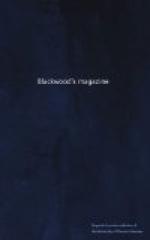* * * * *
REYNOLDS’S DISCOURSES. CONCLUSION.
We omit any notice of the other written works of Sir Joshua—his “Journey to Flanders and Holland,” his Notes to Mason’s verse translation of Du Fresnoy’s Latin poem, “Art of Painting,” and his contributions to the “Idler.” The former is chiefly a notice of pictures, and of value to those who may visit the galleries where most of them may be found; and in some degree his remarks will attach a value to those dispersed; the best part of the “Journey,” perhaps, is his critical discrimination of the style and genius of Rubens. The marrow of his Notes to Du Fresnoy’s poem, and indeed of his papers in the “Idler,” has been transferred to his Discourses, which, as they terminate his literary labours, contain all that he considered important in a discussion on taste and art. The notes to Du Fresnoy may, however, be consulted by the practical painter with advantage, as here and there some technical directions may be found, which, if of doubtful utility in practice, will at least demand thought and reasoning upon this not unimportant part of the art. To doubt is to reflect; judgment results, and from this, as a sure source, genius creates. There are likewise some memoranda useful to artists to be read in Northcote’s “Life.” The influence of these Discourses upon art in this country has been much less than might have been expected from so able an exposition of its principles. They breathe throughout an admiration of what is great, give a high aim to the student, and point to the path he should pursue to attain it: while it must be acknowledged our artists as a body have wandered in another direction. The Discourses speak to cultivated minds only. They will scarcely be available to those who have habituated their minds to lower views of art, and have, by a fascinating practice, acquired an inordinate love for its minor beauties. It is true their tendency is to teach, to cultivate: but in art there is too often as much to unlearn as to learn, and the unlearning is the more irksome task; prejudice, self-gratulation, have removed the humility which is the first step in the ladder of advancement. With the public at large, the Discourses have done more; and rather by the reflection from that improvement in the public taste, than from any direct appeal to artists, our exhibitions have gained somewhat in refinement. And if there is, perhaps, less vigour now, than in the time of Sir Joshua, Wilson, and Gainsborough, those fathers of the English School, we are less seldom disgusted with the coarseness, both of subject and manner, that prevailed in some of their contemporaries and immediate successors. In no branch of art is this improvement more shown than in scenes of familiar life—which meant, indeed “Low Life.” Vulgarity has given place to a more “elegant familiar.” This has necessarily brought into play a nicer attention




